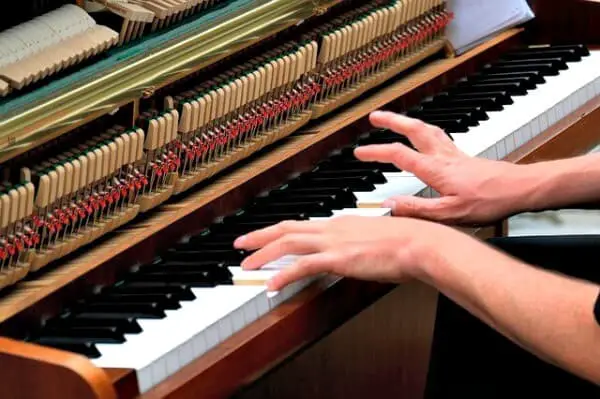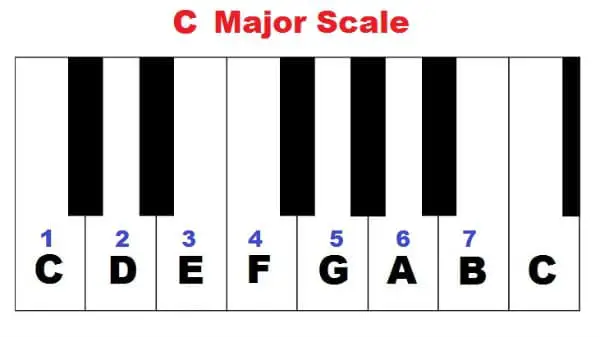- Home
- Piano Chords
- Basic Chord Theory
Basic Piano Chord Theory
This article may contain compensated links. Please read the disclosure for more info.
In this guide, you'll learn about basic chord theory, what triads and music chords are, and how musical chords are built in the root position on the piano.
Piano Chord Theory: 3-Note Chords, or Triads
Learn more about piano chord theory!
Triads are three-note chords. There are four types of triads. They all have their individual color and expressive quality. And you need only change one note a half step up or down!
The four types of triads are:
- Major
- Minor
- Diminished
- Augmented

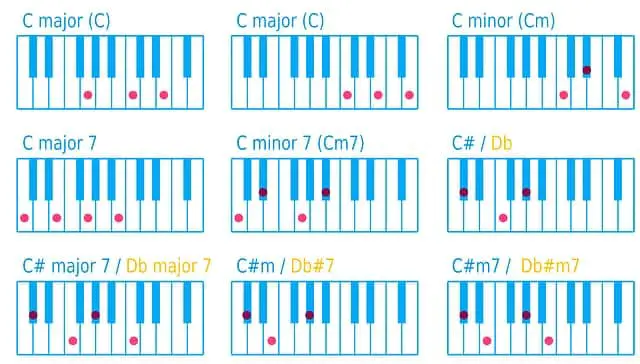 Examples of chords built with stacked thirds.
Examples of chords built with stacked thirds.The basic form of a chord (triad) is made with three notes stacked on top of each other, an interval of a third apart. These thirds can be either big (called major thirds) or small (called minor thirds).
What is a third?
To understand chord theory, you need to know a little about music intervals, especially thirds, since this is what the chords are built with.
On a piano keyboard, you can easily see what a third is:

The interval (distance between the notes) of a third is either two whole steps (major third) or one and a half step (minor third).
You can learn more about whole and half steps (tones and semitones) here.
Triads are made with two thirds, one major and one minor. See how the three notes are all on lines (or in the spaces) evenly spaced a third apart:

The bottom (lowest) note is called the root and gives the name to the chord. The following note (middle) a third higher, is called .. the third!
This third has an important function since it decides whether the chord is a major chord (a major or big third from the root note) or a minor chord (a minor or small third from the root note).
The last note, an interval of a third up from the middle note, is called the fifth since the notes are counted from the root and up.
A basic triad is named after its root, and if the first third is major or minor. In this case, the root is a C, and the first third is a major third. So the chord is called C major, but written only “C”. If it was in minor it would be written “Cm”.
Summary:
Triads are built with intervals of thirds stacked on top of each other. The different types of triads are built in this order (from bottom-up):
- Major Triad: Major third-Minor third
- Minor Triad: Minor third-Major third
- Augmented Triad: Major third-Major third
- Diminished Triad: Minor third- Minor third
Chord Theory: 4-Note Chords, or 7th Chords
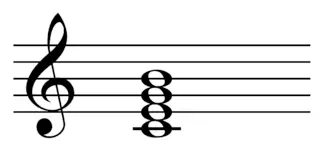
If you add one more third on top of a triad in root position, you get a four-note chord, also called a seventh chord.
When the stacked thirds are (from the note C as being the “root”) major, minor, major thirds, the chord is a major 7th chord, written: Cmaj7.
If you have major, minor, minor thirds, it becomes a regular 7th chord, written: C7.
Chord Theory: Extended Chords
Keep on stacking thirds like “Lego pieces” on top of the triad; the next third is the 9th, then the 11th, and finally the 13th.
Adding more notes to the basic triad gives you many beautiful harmonies to play with (!). By adding more thirds on top, we get:
- The 7th chord is a 4 note chord.
- The 9th chord is a 5 note chord.
- The 11th chord is a 6 note chord.
- The 13th chord is a 7 note chord.
And since we have only 7 different pitches in a major or minor scale- the 13th chord uses all the notes possible in a music scale!
Now let us continue with a 9th Chord (C9) starting on C:
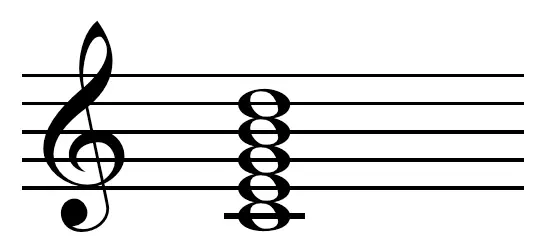
Here is the interval of an 11th (a), and an 11th Chord (C11) (b):

And finally, adding one last note, is the Major 13th Chord (Cmajor13) The first example here:

Why not more?
Well, with a 13th chord, you are actually using all of the 7 different notes of that scale- adding more would just repeat notes.
The notes added to the basic triad are written as numbers: 7, 9, 11, or 13 to the right of the chord name, like this: C7, for example.
C is the basic triad, in this case, a major chord, and added on top is a seventh (counting up from the root up).
C9 includes all the notes, root, 3rd, 5th, 7th, and 9th, but only the root (C) and the last (9) are written. This works in the same way with the 11 and 13 chords.
Too Many Notes? Use Added Tone Chords!
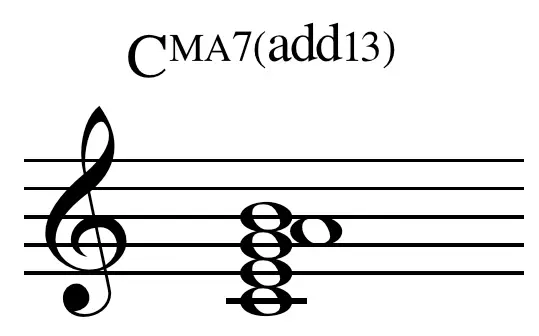
C13 has an awful lot of notes… 7 of them!
So instead, you will often see the chord formula C major 7 (add13), which includes the basic triad plus the 7th and the 13th. This 13th note is the same as the 6th and makes it a bit easier to play!
Now all the chords on this page were in the root position, where the root is the bottom note.
But all chords can be inverted or rearranged to better fit together and be easier to play smoothly.
As long as you keep the same chord notes, you can reorganize them in any way you like.
